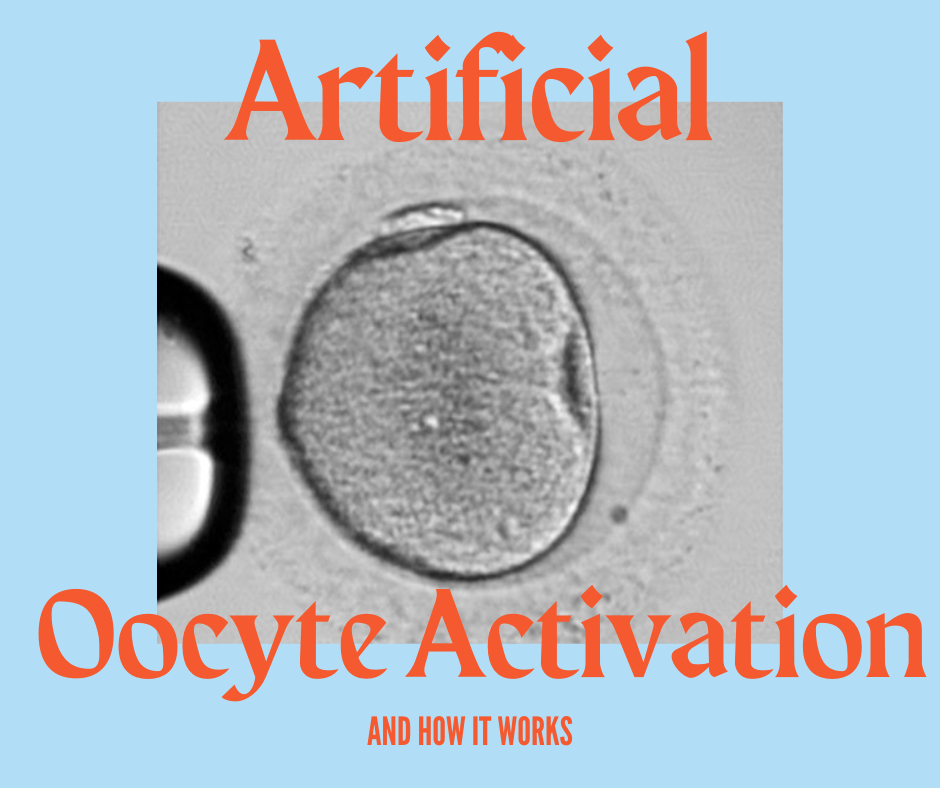Much like a lock and key strategy, we can see similar patterns all around us.
Even in the world of reproductive biology, we see that when sperm and egg interact, a lock-and-key mechanism is also involved.
When the right sperm enters, the egg releases calcium ions. These ions harden the outer membrane, not allowing any other sperm to enter.
Fascinating, yes, but there is more to it than meets the eye.
There are chances of disruptions in the process or the process itself, not happening naturally. That’s when artificial oocyte activation comes in.
So, grab a cup of coffee and let’s explore the world of AOA!
Table of contents
- What is oocyte activation?
- How does oocyte activation occur?
- When do we need to perform artificial oocyte activation?
- What is Artificial Oocyte Activation?
- How Does AOA Work?
- The AOA Procedure: A Step-by-Step Guide
- Looking to the Future: Recombinant PLCζ
- Is AOA Right for Everyone?
What is Oocyte Activation?
Before we jump into the “artificial” part, let’s start with the basics. An oocyte is the scientific term for an egg cell.
When an egg is released from the ovary during ovulation, it’s not quite ready for fertilization yet. It’s actually stuck in a state called “metaphase II arrest.”
For fertilization to occur and embryo development to begin, the egg needs to “wake up” from this arrested state. This awakening process is called oocyte activation.
In natural conception, it’s triggered by the sperm when it enters the egg. Pretty cool, right?
How does oocyte activation occur?
Now, here’s where things get really interesting.
The key player in oocyte activation is calcium. When a sperm fertilizes an egg, it causes a series of waves of calcium to sweep through the egg cell.
These calcium oscillations are like a biochemical alarm clock, waking up the egg and setting off a cascade of events that kick-start embryo development.
When do we need to perform artificial oocyte activation?
Or rather, the question is: what happens when this natural process doesn’t work as it should?
This is where artificial oocyte activation comes in. AOA is a laboratory technique used in some cases of in vitro fertilization (IVF) when normal fertilization fails to occur.
What is Artificial Oocyte Activation?
Artificial oocyte activation is exactly what it sounds like – artificially triggering the activation process in an egg cell.
It’s typically used in conjunction with intracytoplasmic sperm injection (ICSI), a form of IVF where a single sperm is injected directly into an egg.
AOA is particularly useful in cases of:
1. Increased maternal age and Oocyte activation deficiency (OAD)
2. Certain types of male factor infertility
3. Unexplained fertilization failure after conventional IVF or ICSI
How Does AOA Work?
There are several methods to perform artificial oocyte activation, but they all aim to do one thing: mimic the calcium surge that occurs during natural fertilization.
The most common methods include:
- Chemical Activation
This involves exposing the eggs to chemicals that increase calcium levels inside the cell. The most commonly used agents are:
- Calcium ionophores (like A23187 or ionomycin)
- Strontium chloride
2. Electrical Activation
In this method, a brief electrical pulse is applied to the egg, which causes pores to open in the cell membrane, allowing calcium to flood in.
3. Mechanical Activation
This involves manipulating the egg’s cytoplasm during the ICSI procedure to trigger calcium release.
The AOA Procedure: A Step-by-Step Guide
Let’s walk through what typically happens during an AOA procedure:
1. Eggs are retrieved from the woman’s ovaries. They are denuded and mature ones are chosen for ICSI.
2. The semen sample is collected from the male partner and processed. A small sample is taken into the ICSI dish.
3. ICSI is performed, injecting a single sperm into each egg.
4. Immediately after ICSI, the AOA method is applied (e.g., injected eggs are exposed to a calcium ionophore solution). This works by placing them in oocyte activation media for about 10-15 minutes or as per the protocol.
5. The injected eggs are then put back into a culture medium and monitored for signs of fertilization and early embryo development.
What AOA holds for the future
AOA has shown promising results in improving fertilization rates and pregnancy outcomes in certain cases. However, it’s important to note that it’s still considered an experimental procedure by many regulatory bodies.
Why the caution? Well, we’re dealing with the very beginnings of life here. Altering the activation process, even slightly, could potentially have effects we don’t fully understand yet.
That’s why ongoing research and long-term follow-up studies are crucial.
Looking to the Future: Recombinant PLCζ
Here’s an exciting development on the horizon: scientists are exploring the use of a recombinant form of phospholipase C zeta (PLCζ), a protein found in sperm that’s believed to be the natural trigger for egg activation.
Using recombinant PLCζ could potentially provide a more “natural” method of artificial activation, mimicking the body’s own processes more closely than current AOA methods.
It’s still in the research phase, but it’s a promising avenue that could revolutionize the field of assisted reproduction.
Is AOA Right for Everyone?
While AOA can be a game-changer for some couples, it’s not a one-size-fits-all solution.
The decision to use AOA should be made in consultation with a fertility specialist, taking into account the specific cause of infertility and any previous failed IVF attempts.
As with all areas of medical science, research in this field continues to evolve. Who knows what new discoveries and techniques the future might hold?
Until then, AOA continues to be a ray of hope for couples who can truly benefit from it.
